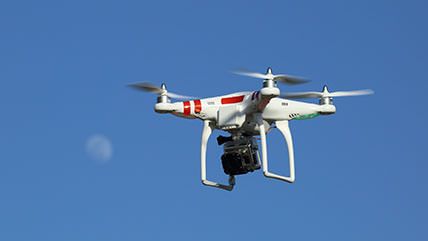FAA Grounds College Students Pursing Drone Degrees

In drone school, students study math and learn robotics. What they do not do is fly drones.
That's because per Federal Aviation Administration (FAA) rules, unmanned aerial vehicles cannot be operated for commercial use—and that applies to for-profit teaching programs.
To get around the rules, schools like Embry-Riddle Aeronautical University train students on flight simulators or have students fly drones indoors.
But this restriction is still likely to stifle academic research, according to a lengthy letter signed by 29 professors and sent to the FAA.
The letter details several issues that concern drone enthusiasts:
1. Unprecedented Expansion of FAA Jurisdiction
The Interpretative Rule states that "the FAA intends to apply its enforcement authority to model aircraft operations that endanger the safety of the National Airspace System (NAS)."While federal statutes in place since 1926 grant the FAA authority to regulate the navigable air space, understood to be the airspace above approximately 500 feet altitude in most areas, the NAS is a term that the FAA now implies comprises all airspace in the United States, including our campuses, private backyards, and possibly even inside buildings.
2. Unreasonably Broad Definition of "Aircraft"
The Interpretive Rule also vastly expands the conventional definition of "aircraft" to include, in a most literal sense, "any contrivance invented, used, or designed to navigate, or fly in, the air". Objects the size of butterflies and even toys that are "used in the air" appear to be gaining the rights, regulatory obligations, and federal protections afforded to full-sized passenger aircraft.
3. Unwarranted Distinction between Recreational and Commercial Model Aircraft
The regulatory distinction between "recreational" and "commercial" use of model aircraft is troubling in that the FAA has not substantiated how this distinction promotes safety. It is concerning, for example, that a ten-year-old hobbyist can freely fly model aircraft for recreation, while our nation's scientists, engineers, and entrepreneurs are prohibited from using the same technology in the same types of environments.
Private for-profit schools are not the only ones getting on the FAA's nerves. Last year, the agency sent letters to two public universities telling them to shut down their drone journalism programs. The University of Missouri and the University of Nebraska-Lincoln were both told to halt their programs and obtain Certificates of Authorization. The process for being granted a certificate can take several months. The schools had been trying to operate under the rules set for recreational use of model aircraft. But the FAA didn't consider the programs as recreational.
The FAA considers the journalism drones to be "public aircraft" and the university to be a public operator, which places it in a more restrictive category than amateurs.
Under amateur rules, unmanned aircraft must stay under 400 feet and conduct flights away from populated areas. Under the more restrictive rules, the program must designate a small area—up to 2 square miles—and provide proof of the airworthiness of each vehicle.
Entrepreneurs, researchers, and students trying to use drones in new innovative ways will have to continue to wade around in murky waters because the FAA has not finished writing its drone regulations. Congress gave the agency to September 2015, but according to a report from the Department of Transportation's inspector general's office, the FAA is "significantly behind schedule" and will likely not meet the deadline.


Show Comments (36)